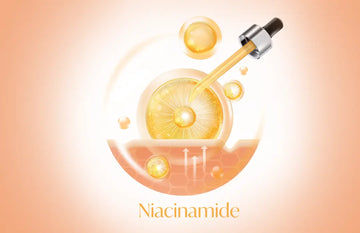In a world full of different homemade remedies on the internet, it is easy to get glued to one of them and think of it as skincare. But it is very important to buy and apply appropriate skincare backed by science. One of the magical ingredients that help you achieve clear, glass skin is Salicylic Acid.
To determine whether salicylic acid will work for you, your skin type, or your type of acne, you must first understand how it works. How is it effective and contributes to clear skin?
What is Salicylic Acid?
Derived from willow bark, Salicyclic acid is a type of hydroxy acid and is classified as salicylates. There are two kinds of acids—beta hydroxy acids (BHAs) and alpha hydroxy acids—are frequently used in skin-care products (AHAs). Salicylic acid is a beta hydroxy acid salicylic acid. BHAs are oil-soluble and make it easy to penetrate your skin. While AHAs work well on the skin's surface to loosen old, dead skin and reveal newer, fresher skin, salicylic acid works deeper and can penetrate the pores to unclog them.
It works by increasing skin moisture and dissolving the substance that causes skin cells to stick together. This facilitates the removal of skin cells. Now, it makes sense why it works well for achieving fresh, clear skin.
Although it is primarily famous as an acne spot treatment, it works for unveiling clear skin in many ways. This amazing ingredient helps with many skin concerns including blackheads, whiteheads, and many more. It can be used by anyone who is looking for natural, glowy, healthy skin.
Advantages of Salicylic Acid
Salicylic acid is used to treat a variety of skin conditions other than acne, such as warts and dandruff, due to its unique properties. Here's how salicylic acid works for your body’s largest organ, the skin:
Salicylic Acid as an exfoliant
Salicylic acid is ideal for a thorough exfoliation. Salicyclic acid can cause the top layer of skin cells to soften and then slough. Salicylic acid unclogs pores and encourages exfoliation.
One theory for acne's aetiology is that skin cells do not behave normally and instead of sloughing off, they stick together while clogging the pores and result in cysts and blackheads. It also aids in the removal and loosening of these skin cells, as well as the dissolution of blackheads.
Clogged pores? Salicylic acid to rescue
Salicylic acid can enter the pores, loosen the "glue" that holds skin cells together, and remove the contents of clogged pores that cause superficial acne – whiteheads, blackheads, and small red pimples.
Say goodbye to whiteheads and blackheads
Acne is believed to be caused by three factors: abnormal sloughing of skin cells, excessive oiliness, and the action of the P. acnes bacteria. Salicylic acid generally works on the first reason and helps in dissolving the skin debris which is responsible for clogging pores and causing acne.
Salicylic acid can dissolve keratin plugs and directly regulate skin cells. Because of its antibacterial activity, it has some efficacy against cystic acne, but not as much as it does against blackheads and whiteheads.
Oily face, no more with salicylic acid
Due to being oil-soluble, salicylic acid can penetrate beneath the skin's surface to remove excess sebum and reduce oiliness. This, in turn, may result in a reduction in the appearance of pores.
Smaller looking pores
Salicylic acid, acts by deep cleansing the pores and removing debris and oil, reducing the appearance of pores.
Salicylic acid to treat acne
Salicylic acid treats acne by unclogging clogged pores. It accomplishes this by breaking down the bonds between dead skin cells, allowing them to more easily exit the pore, as well as breaking down oils such as sebum.
Due to its lipophilic qualities, salicylic acid can penetrate deep into pores and prevent acne from forming in the future. Researchers have found that salicylic acid has an inhibitory effect on the growth of acne-causing bacteria.
Salicylic acid is also Anti-inflammatory
At low concentrations, Salicylic acid exerts anti-inflammatory properties that aid in the treatment of breakout irritation and redness.
How do you use it?
Salicylic acid serums are available in the market at various concentrations but the most popular is 2%. At this concentration generally, salicylic acid is tolerated well by all types of skins.
Begin by applying our 2% Salicylic Acid Serum for the best results, every few days and observe how your skin reacts after each application. Your skin will show it to you. If it becomes irritated, you should rest for a day or two and be more diligent about moisturizing.
Higher concentrations of salicylic acids exert high levels of exfoliation and may show high-grade irritation. These should be used under a dermatologist's supervision.
Also, the use of salicylic acid exfoliated the upper dead layer making your skin more susceptible to sunlight and pollution. Use of a good moisturizer and sunscreen is highly recommended to be used while using a salicylic acid serum.
There are many variables at play when it comes to using Salicylic acid to treat breakouts but it should be approached with caution. The use of salicylic acid is determined by one's skin type, the underlying cause, and the severity of the acne. But for best results against the above-mentioned issues, including anti-inflammation, use our 2% salicylic acid serum that can be combined with moisture for perfect results.








 Mon to Sat - 10 am to 7 pm
Mon to Sat - 10 am to 7 pm